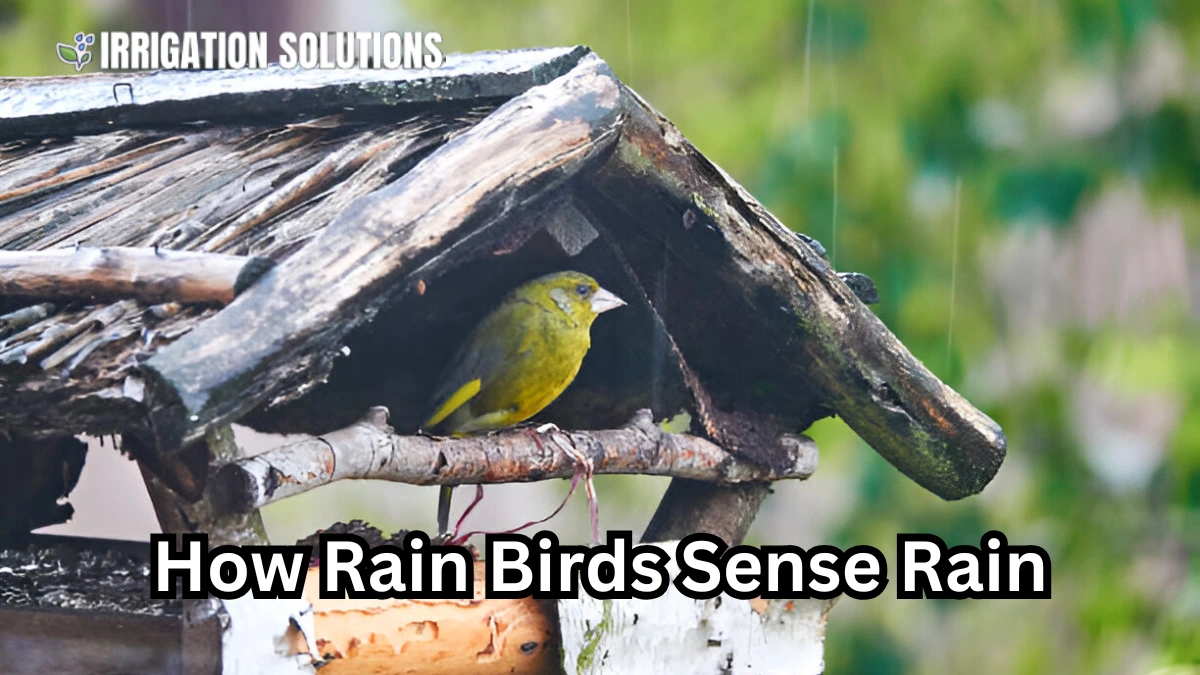How Rain Birds Sense Rain

Rain birds have long fascinated bird watchers, researchers, and nature enthusiasts alike. These remarkable creatures seem to have an uncanny ability to sense rain before it arrives, making them an integral part of folklore and scientific study. But what exactly are rain ? How do they predict rainfall, and what role do they play in the ecosystem?
In this comprehensive guide, we’ll explore everything you need to know about rain birds, their behaviors, habitats, and the science behind their weather predicting abilities.
What Are Rain Birds?
The term “rain bird” refers to various bird species that display unique behaviors before or during rainfall. These birds are often associated with myths, cultural beliefs, and scientific curiosity. Some of the most well known birds include:
- Rain Cuckoo (Koel) Found in South Asia and Africa, known for its distinct call before rainfall.
- Burchell’s Coucal A bird native to Africa that sings loudly before heavy rain.
- Fork-Tailed Drongo Recognized for its vocalizations that intensify before a storm.
- Eastern Whipbird Native to Australia, associated with changing weather patterns.
Each of these birds exhibits behaviors that have led people to believe they have an innate ability to predict rain.
How Do Rain Birds Predict Rain?
Rain don’t possess supernatural abilities, but their behaviors are deeply rooted in environmental cues. Scientists suggest that birds rely on the following factors to anticipate rainfall:
1. Changes in Atmospheric Pressure
Birds are highly sensitive to barometric pressure. When pressure drops, which often precedes rainfall, birds may alter their behavior singing more frequently, seeking shelter, or changing feeding habits.
2. Humidity and Temperature Shifts
A rise in humidity and a drop in temperature signal incoming rain. Some birds, like cuckoos, respond by becoming more vocal. This increased activity is often mistaken for weather prediction when it’s actually an instinctive response to environmental changes.
3. Insect Activity Increases Before Rain
Rain often triggers a surge in insect movement. Many rain birds, being insectivores, take advantage of this by feeding more aggressively, which in turn makes them more noticeable to humans.
4. Wind and Cloud Patterns
Birds are known to adjust their flight paths based on wind currents and cloud formations. Some species change their perching behavior or stop flying altogether when storm clouds gather.
Rain Birds in Mythology and Folklore
Across different cultures, rain have played significant roles in mythology and traditional beliefs:
- African Tribes The Burchell’s Coucal is often called the “rainbird” because of its song before rainfall. Some tribes believe it possesses mystical powers to summon rain.
- Native American Beliefs Various tribes associate birds, particularly ravens and eagles, with rain and storm deities.
- Asian Folklore In parts of India, the koel’s call is said to bring rain, leading to its association with monsoons.
Scientific Studies on Rain Birds
Several studies have examined the relationship between bird behavior and weather changes:
- A 2014 study by the University of California found that birds adjust their foraging patterns in response to impending storms.
- Research in South Africa documented that coucals vocalize more frequently in humid conditions.
- A BBC Earth report highlighted that birds often take shelter up to 24 hours before a major storm, suggesting they sense atmospheric changes.
These findings confirm that birds do not “predict” rain in a mystical sense but instead react to natural cues that precede storms.
Habitat and Distribution of Rain Birds
Rain can be found across various continents, typically in environments where rainfall is a crucial part of the ecosystem:
| Bird Species | Region | Preferred Habitat |
| Rain Cuckoo (Koel) | Asia, Africa | Forests, urban gardens |
| Burchell’s Coucal | Sub-Saharan Africa | Grasslands, wetlands |
| Fork-Tailed Drongo | Africa, India | Open woodlands, savannas |
| Eastern Whipbird | Australia | Rainforests, dense scrublands |
Why Rain Birds Matter in the Ecosystem
Rain birds play vital ecological roles, making them important for biodiversity and environmental balance:
- Pest Control Many rain birds feed on insects, reducing pest populations naturally.
- Seed Dispersal Some species contribute to forest regeneration by consuming and spreading seeds.
- Weather Indicators for Farmers Historically, farmers have relied on bird behavior to anticipate rainfall and plan agricultural activities.
How to Identify Rain Birds in the Wild
If you want to observe rain birds in their natural habitat, consider these tips:
1. Listen for Unique Calls
Most rain birds have distinct calls that become more frequent before rain. For example, the Burchell’s Coucal produces a deep, bubbling sound.
2. Observe Feeding Behavior
Before rainfall, birds often become more active in foraging, particularly insect eating species.
3. Watch for Shelter Seeking Movements
Rain birds may gather in sheltered areas like thick foliage or under tree canopies before a storm.
4. Monitor Flight Patterns
Some species reduce their flight activity before heavy rain, preferring to stay closer to the ground.
Conservation Status of Rain Birds
While many rain birds thrive in the wild, some face threats due to habitat loss and climate change. Conservation efforts focus on:
- Protecting Wetlands and Forests Ensuring the preservation of their natural habitats.
- Monitoring Populations Conducting bird surveys to track species health.
- Reducing Pesticide Use Promoting eco friendly farming practices to protect insect eating birds.
Case Study: The Koel in Urban Landscapes
The Asian Koel (Eudynamys scolopaceus) has adapted remarkably well to urban settings. A study in India found that the koel’s population remains stable due to its ability to thrive in gardens and city parks. Despite habitat destruction in some regions, this bird continues to play its role as a natural rain harbinger.
Final Thoughts
Rain birds are not just fascinating creatures they serve as indicators of environmental changes and play crucial roles in nature. Their ability to respond to atmospheric shifts makes them valuable to both science and folklore. Whether you’re a birdwatcher, researcher, or nature lover, understanding these birds adds a new dimension to appreciating the natural world.
So, the next time you hear a rain bird calling, take a moment to observe. Nature might be giving you a hint that rain is on the way.






